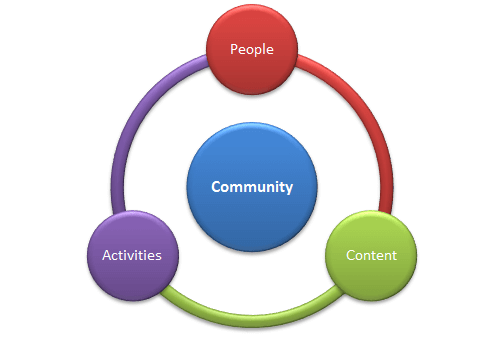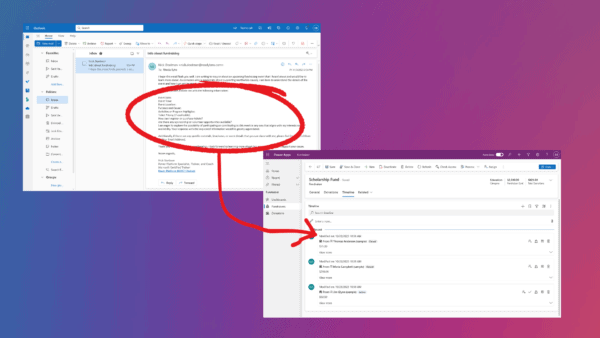Social computing is the topic de jour. End users want it, enterprises apparently must have it. But what does it all mean? What is the enterprise applicability of these largely consumer-focused technologies? With all the focus on efficiency, cost cutting and doing more with less, does it make sense to offer users what may be nothing more than a productivity-sapping application boondoggle? And once these tools are deployed, what can a company do to track usage and productivity? What are the best practices for managing SharePoint social computing in the enterprise?
While it’s true that the business value of some of the most popular consumer-based social tools is questionable, when applied in a business setting – and as a social layer to many enterprise applications and systems – there can be tremendous value in the underlying technologies. At their core, all enterprise collaboration systems, web content management systems and social networks serve the same fundamental purpose (among others): the sharing of information among individuals and groups or teams of people. In the evolution of the enterprise application, social computing is quickly becoming the de facto method for search.
Managing social computing in SharePoint follows the same rules and best practices for the rest of the platform but with certain distinctions. There is a need for reporting and proactive administration on permissions, visibility into usage/activity, monitoring of storage, and general auditing. Beyond reporting, of course, social computing requires active governance to help teams stay productive, and to keep the overall platform running efficiently.
This article focuses on three corporate scenarios where social media tools can drive significant business value, and how SharePoint 2010 (out-of-the-box) compares to third-party or consumer-focused social computing solutions.
What end users are asking for?
The hardest part of building your social computing strategy is translating your end user and stakeholder requirements into realistic, achievable goals. It’s easy to get caught up in the hype and excitement, but difficult to relate the latest, greatest technologies on the web to your business objectives. Beyond the wish lists and hype are real requirements. Enterprises need new ways to:
> generate and take action on innovative ideas;
> connect those ideas across the organization and beyond geographical divides;
> deliver some form of semantic search capability that can understand what the users are looking for, and then to promulgate ideas and artifacts based on context
> collaborate in more powerful and meaningful ways across the enterprise.
End users want the technology to fit the way people work, not require them to work a different way to fit the technology. And yes, they really want the cool technology, the latest gadgets, and the newest toys. The trick is to deliver all of this in a way that makes sense to the business, and can be tracked and measured by your key performance indicators. So here is what your end users are asking for (translated for business consumption) and how SharePoint can answer those requests:
Enterprise Facebook
The Ask:
Your team wants to build out a Facebook-like social networking solution on your intranet.
This is one of the most common social computing requests by end users – the creation of an enterprise Facebook-like application to add expanded profile information, track uploaded content, more easily provide links and tags with peers and management, and to promote cross-team collaboration and team building. But what are end users really asking for when they make this request? And what is the business value for an enterprise?
The SharePoint Solution:
While this is the easiest request to map to SharePoint out-of-the-box capability – MySites – this request is not just about personal connections and self-promotion (although they play a part, to some extent). Enterprises need to look more closely at this request and understand that MySites are an essential part of the search experience in SharePoint 2010. In SharePoint 2010, the rich user profiles are critical to more than search. They can help speed the creation of productivity solutions, such as workflow (as mentioned by SharePoint MVP Mike Oryszak in http://youtu.be/aJ0aSARW4pE) by providing more information about end users than is typically stored in Active Directory, and making this information more accessible to the broader community.
The deployment of social features in conjunction with MySites will improve organic search results by allowing end users to add keywords and metadata to their own content, and to other content within their network or through the projects in which they participate. MySites provide a semantic search experience, connecting content to people and the social layer of dialog that runs in-between traditional taxonomy and the personal connectedness of two co-workers talking, allowing end users to find connected data they would not otherwise find through traditional search queries. This helps to further break down information (data) silos.
Another important value is providing people results to search results. By providing this “expertise search” capability, enterprises can decrease employee on-boarding costs by making it easier to find people, teams, and information across the organization as new employees get up to speed on new projects and the new organization. Organizations will decrease inefficiencies by clarifying roles and responsibilities organically – search results will help end users identify who is the right person to contact (Responsible, Accountable), versus secondary (unconnected) resources who may have interest or experience on a topic, but may not be directly involved. You lose this context with traditional search alone.
How to Best Manage This: Managing MySites follow a lot of the same principles of managing regular (team) sites, but they have an added layer of complexity. That complexity is within the “MY” – the individuality of a MySite. This makes the need for a formal governance plan for SharePoint so important, as well as a proactive strategy for monitoring and managing these sites.
Key areas to monitor are storage, activity, and content. Periodic analysis of Storage is a must as it can be directly related to performance. MySites can grow fast due to the fact that users may store large personal files. A regular inventory of what MySites are out there can help to decide when to delete or archive MySites owned by users no longer with the organization. Published content in MySites can be subject to compliance regulations just like regular sites. Item level insertion and deletion rules need to be set for MySites. The point here is to make sure MySites are explicitly outlined in your governance plan. If you neglect to include them, you could be leaving the organization unprotected.
Twitter-like Communication
The Ask:
Your team wants to build an intranet version of Twitter to help everyone stay instantly connected, sharing product, support and competitive information in a secure manner. One of the fastest growing areas of social computing is the socially-driven listening posts on customer behavior. Connect to Twitter, and you have an ear to the ground on product or technology trends, competitor movements, and customer feedback on your own products and services.
While there are services which seek to move this type of communication into the enterprise (Jive and Yammer, for example), the public-facing and free Twitter-based tools (TweetDeck, HootSuite, etc.) provide solid offerings for monitoring external voices. Additionally, a new Twitter service seems to launch each week offering to help you monitor, track, and control what is being said about your company in the “Twitterverse.” But this is not necessarily the same thing your end users are asking for in the enterprise.
The SharePoint Solution:
While MySites once again provides a solution (allowing you to go beyond the Twitter limitation of 144 characters), within the enterprise the need is really about creating multiple collaboration touch points. Every MySite includes the ability to share a status, and because SharePoint is an extensible platform, you can even add Twitter feeds to your MySites or Team Sites using an XML Web Part (as illustrated by SharePoint MVP Randy Drisgill at http://bit.ly/UhuKL).
As with any feature request, the first step is to understand the business driver behind the request, which makes the resulting output more clear: sometimes it reveals itself as a technical solution, sometimes a process change. How to manage these status updates depends entirely on the solution you rollout. For example, SharePoint out-of-the-box stores status messages, which has a negligible impact on storage. However, a more robust solution might capture and store this data combined with other data and images (and video, and other artifacts) indefinitely, which – if deployed across the organization – begin to add up and need some level of monitoring. It might be stored or displayed in a list, making its contents more searchable and configurable, allowing end users to further tag and refine the contents.
Anywhere Access
The Ask:
Your team would like to access critical content and applications through their personal devices. You’ve started to see iPhones and iPads pop up in meetings, as well as various Android and Blackberry devices, and people are beginning to ask for support of these other tools, giving them more options for interacting with core systems. This could present a number of security, support, and cost implications to your business. Decisions on what to support – and how fast to on-board – should not be made hastily. Once again, it’s important that you first understand the business drivers, and explore the options before moving forward. Is it really about the specific devices, or is the problem that your environment is locked down too tight? Do your current environment and near-term plans adequately match the way your end users need to work today?
The SharePoint Solution:
Some of the key features of SharePoint 2010 offer an improved offline story for the enterprise, providing mobile support, presence awareness across SharePoint and the Office suite, and an improved ‘access and sync anywhere’ experience through SharePoint Workspace (formerly known as Microsoft Office Groove 2007). Add these many improvements together, and SharePoint offers a compelling story for teams looking for additional access options.
While end users may still not find everything they are looking for (like a SharePoint app for iPhone or Android), with much improved support for various browsers and the new Microsoft SharePoint Workspace Mobile 2010, you can now browse document libraries and lists right from your phone. In addition, you can edit and sync documents in the various mobile Office apps like Word 2010, Excel 2010, and PowerPoint2010, and sync all of them to SharePoint 2010. (per Joel Oleson http://bit.ly/cMuhSL). Presence awareness has become ubiquitous across SharePoint and the Office apps, helping teams identify who is online and available – and through Microsoft Lync, to reach out and connect with them through email, instant message, voice, or LiveMeeting.
And finally, with SharePoint Workspace, teams can setup bi-directional synchronizations between lists and libraries, allowing end users to check out content, update offline, and automatically synchronize with their SharePoint workspace when reconnected. It also provides folder sharing, allowing teams to work from a common folder.
Developing Your Strategy
Social computing is here to stay. Most software vendors recognize this, and social features are being added to most enterprise applications. While it’s reasonable to push back on end user request, requiring them to provide business justification for any new features or services, for most businesses it’s only a matter of time before competitiveness and agility require them to implement an enterprise-wide social computing strategy. Proactively managing this strategy is the key to making your solution effective, and in keeping your organization productive.
As you review your own strategies, consider three keys to successfully navigating the social computing wave of adoption in your enterprise:
1. Identify business gaps that can be filled by social features.
End user passion for new technology aside, technology decisions should be based (wherever possible) on basic return on investment principles. While putting quantitative reasoning around a qualitative improvement can be difficult (much less applying a KPI or financial target to a specific feature), what generally sells management on social computing tools is identifying a specific business gap and demonstrating how the tools will fill that gap.
2.Ensure a cultural fit for these new features.
Which features are deployed and how quickly depends on the culture of an organization. No enterprise can be forced into a solution – while some within your company may want the latest, greatest features and gadgets, is it the right way to spend your budget at this point in time? And do these tools fit with the way you do business today? Once you make a commitment, how can your company culture help the social laggards? What do they need to get on board?
3. Develop a sound plan for deploying these new features, including buy-in from end users and key stakeholders.
Develop a strategy for moving your company forward with new tools and capabilities, one step at a time. This will ensure adoption, and help you learn as you go, iterating on what works so that the next phase builds upon this success.
Many companies are finding that SharePoint 2010 out-of-the-box can provide many of the features their end users are looking for. For those who require custom features for their social computing strategies, remember that SharePoint is a highly flexible and customizable platform, with a healthy ecosystem of partners and solution providers that can provide deep vertical expertise to meet those specific needs. Develop your plan, understand your end user requirements, and leverage the many capabilities of SharePoint to meet your future social computing and collaboration needs.

Christian Buckley
Christian Buckley was a speaker at the European SharePoint Conference 2016. Why not keep up to date with Christian’s amazing work by joining our community or by following us on twitter or facebook!











